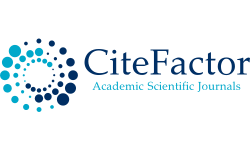La familiaridad dinámica: Estudio de caso aplicado a una empresa familiar en Chile
DOI:
https://doi.org/10.22451/3002.nbr2018.vol4.2.10029Palabras clave:
empresa familiar, capacidades dinámicas, estudio de caso, rutinas organizativas, dynamic familiness.Resumen
En este trabajo, aplicando la teoría de las capacidades dinámicas, testeamos el modelo de ‘dynamic familiness’ en el contexto chileno. Este modelo de familiaridad dinámica ha sido desarrollado recientemente, se fundamenta a partir de la influencia de la familia en la empresa y en sus dos enfoques de análisis – participación y esencia – y su impacto en la generación de rutinas organizativas familiares. En este sentido, el modelo permite estudiar la generación de capacidades dinámicas a partir del proceso idiosincrásico de gestión del conocimiento que se manifiesta en la empresa familiar. De acuerdo con el estado de desarrollo teórico de la literatura que fundamenta el modelo de investigación, se aplica la metodología de estudio de caso a una empresa familiar representativa en el contexto chileno. El estudio proporciona evidencia relevante para contrastar el modelo de investigación en el contexto chileno. Los resultados obtenidos permiten analizar en perspectiva como la influencia familiar impacta en el desarrollo de capacidades, haciendo que la empresa se proyecte a través de las generaciones. Esta investigación permite ampliar la evidencia sobre el alcance de la familiaridad dinámica en el contexto tanto teórico como de gestión de la empresa familiar.
Descargas
Citas
Alavi, M. y Tiwana, A. (2002). Knowledge integration in virtual teams: The potential role of KMS. Journal of the American Society for Information Science and Technology, 53(12), 1029-1037.
Allen, N. J. y Meyer, J., P. (1990). The measurement and antecedents of affective, continuance and normative commitment to the organization. Journal of Occupational Psychology, 63(1), 1-18.
Arregle, J.-L., Hitt, M. A., Sirmon, D. G. y Very, P. (2007). The development of organizational social capital: Attributes of family firms. Journal of Management Studies, 44(1), 73-95.
Astrachan, J. H. (2010). Strategy in family business: Toward a multidimensional research agenda. Journal of Family Bunisess Strategy, 1(1), 6-14.
Astrachan, J. H., Klein, S. B. y Smyrnios, K. X. (2002). The F-PEC scale of family influence: A proposal for solving the family business definition problem. Family Business Review, 15(1), 45-58.
Barros-Contreras, I., Hernangómez-Barahona, J. y Martín-Cruz, N. (2014). La ‘familiaridad dinámica’de las empresas familiares. El caso del Grupo Yllera. Universia Business Review, 42(2), 88-109.
Barros, I., Hernangómez, J. y Martín-Cruz, N. (2016). A theoretical model of strategic management of family firms. A dynamic capabilities approach. Journal of Family Business Strategy, 7(3), 149-159.
Barros, I., Hernangómez, J. y Martín-Cruz, N. (2017). Familiness and socioemotional wealth in Spanish family firms: An empirical examination. European Journal of Family Business, 7(1), 14-24.
Berrone, P., Cruz, C. y Gómez-Mejía, L. R. (2012). Socioemotional wealth in family firms: Theoretical dimensions, assessment approaches, and agenda for future research. Family Business Review, 25(3), 258-279.
Berrone, P., Cruz, C., Gómez-Mejía, L. R. y Larraza-Kintana, M. (2010). Socioemotional wealth and corporate responses to institutional pressures: Do family-controlled firms pollute less? Administrative Science Quarterly, 55(1), 82-113.
Cabrera-Suárez, K., De Saá-Pérez, P. y García-Almeida, D. (2001). The succession process from a resource- and knowledge-based view of the family firm. Family Business Review, 14(1), 37-46.
Carlock, R. S. y Ward, J. L. (2001). Strategic planning for the family business: Parallel planning to unify the family and business. Houndsmill, NY, USA.: Palgrave.
Colombo, G., Koiranen, M. y Chirico, F. (2006). Understanding family businesses as value creation systems through system dynamics. Family firms as arenas for trans-generational value creation. A qualitative and computational approach. University of Jyväskylä. Jyväskylä, Finland.
Collis, D. J. (1994). Research note: How valuable are organizational capabilities? Strategic Management Journal, 15(S1), 143-152.
Cruz, C. C., Gómez-Mejia, L. R. y Becerra, M. (2010). Perceptions of benevolence and the design of agency contracts: CEO - TMT relationships in family firms. Academy of Management Journal, 53(1), 69-89.
Chirico, F. (2006). Knowledge, dynamic capabilities and family inertia in family firms: A computational approach. Family firms as arenas for trans-generational value creation. A qualitative and computational approach. University of Jyväskylä. Jyväskylä, Finland.
Chirico, F. (2008). Knowledge accumulation in family firms: Evidence from four case studies. International Small Business Journal, 26(4), 433-462.
Chirico, F. y Nordqvist, M. (2010). Dynamic capabilities and trans-generational value creation in family firms: The role of organizational culture. International Small Business Journal, 28(5), 487-504.
Chirico, F., Nordqvist, M., Colombo, G. y Mollona, E. (2012). Simulating dynamic capabilities and value creation in family firms: Is paternalism an 'asset' or 'liability'? Family Business Review, 25(3), 318-338.
Chirico, F. y Salvato, C. (2008). Knowledge integration and dynamic organizational adaptation in family firms. Family Business Review, 21(2), 169-181.
Chirico, F. y Salvato, C. (2016). Knowledge internalization and product development in family firms: When relational and affective factors matter. Entrepreneurship Theory & Practice, 40(1), 201-229.
Chua, J. H., Chrisman, J. J., Steier, L. P. y Rau, S. B. (2012). Sources of heterogeneity in family firms: An introduction. Entrepreneurship Theory and Practice, 36(6), 1103-1113.
De Massis, A. y Kotlar, J. (2014). The case study method in family business research: Guidelines for qualitative scholarship. Journal of Family Business Strategy, 5(1), 15-29.
Eddleston, K. A. y Kellermanns, F. W. (2007). Destructive and productive family relationships: A stewardship theory perspective. Journal of Business Venturing, 22(4), 545-565.
Eisenhardt, K. M. (1989). Building theories from case study research. The Academy of Management Review, 14(4), 532-550.
Eisenhardt, K. M. y Martin, J. A. (2000). Dynamic capabilities: What are they? Strategic Management Journal, 21(10-11), 1105-1121.
Enberg, C. (2007). Knowledge integration in product development projects. Dissertations from IMIE No 106 Doctoral Dissertation Institutionen för Ekonomisk. Linköping Universitet. Linköping, Sweden.
Feldman, M. S. y Pentland, B. T. (2003). Reconceptualizing organizational routines as a source of flexibility and change. Administrative Science Quarterly, 48(1), 94-118.
Foss, N. J. (2005). Strategy, economic organization, and the knowledge economy: The coordination of firms and resources. New York, USA.: Oxford University Press.
Gersick, K. E., Davis, J. A., McCollom, M. y Lansberg, I. (1997). Generation to generation life cycles of the family business. Boston MA, USA: Harvard Business School Press.
Glynn, M. A., Lant, T. K. y Milliken, F. J. (1994). Mapping learning processes in organizations: A multi-level framework linking learning and organizing. In J. R. M. C. Stubbart, J. F. Porac, eds. (Ed.), Advances in managerial cognition and organizational information processing. Greenwich, CT., USA: JAI Press, Inc.
Gómez-Mejía, L. R., Cruz, C., Berrone, P. y De Castro, J. (2011). The bind that ties: Socioemotional wealth preservation in family firms. The Academy of Management Annals, 5(1), 653-707.
Gómez-Mejía, L. R., Haynes, K. T., Núñez-Nickel, M., Jacobson, K. J. L. y Moyano-Fuentes, J. (2007). Socioemotional wealth and business risks in family-controlled firms: Evidence from Spanish olive oil mills. Administrative Science Quarterly, 52(1), 106-137.
Grant, R. M. (1996). Prospering in dynamically-competitive environments: Organizational capability as knowledge integration Organization Science, 7(4), 375-387.
Habbershon, T. G. y Williams, M. L. (1999). A resource-based framework for assessing the strategic advantages of family firms. Family Business Review, 12(1), 1-25.
Habbershon, T. G., Williams, M. L. y MacMillan, I. (2003). Aunified systems perspective of family firm performance. Journal of Business Venturing, 18(4), 451-465.
Handler, W. C. (1990). Succession in family firms: A mutual role adjustment between entrepreneur and next-generation family members. Entrepreneurship Theory & Practice, 15(1), 37-51.
Helfat, C. E., Finkelstein, S., Mitchell, W., Peteraf, M. A., Sing, H., Teece, D. J. y Winter, S. G. (2007). Dynamic capabilities: Understanding strategic change in organizations. Oxford, UK: Blackwell.
Instituto Nacional de Estadísticas (2016). Encuestas Intercensales Agropecuarias. Departamento de Estudios Económico Estructurales, Instituto Nacional de Estadísticas, Chile.
Jehn, K. A. (1995). A multimethod examination of the benefits and detriments of intragroup conflict. Administrative Science Quarterly, 40(2), 256-282.
Jehn, K. A. (1997). A qualitative analysis of conflict types and dimensions in organizational groups. Administrative Science Quarterly, 42(3), 530-557.
Klein, S. B., Astrachan, J. H. y Smyrnios, K. X. (2005). The F-PEC scale of family influence: Construction, validation, and further implication for theory. Entrepreneurship Theory & Practice, 29(3), 321-339.
Kogut, B. y Zander, U. (1992). Knowledge of the firm, combinative capabilities, and the replication of technology. Organization Science, 3(3), 383-397.
Leana, C. R. y Pil, F. K. (2006). Social capital and organizational performance: Evidence from urban public schools. Organization Science, 17(3), 353-366.
Lee, M.-S. y Rogoff, E. G. (1996). Research note: Comparison of small businesses with family participation versus small businesses without family participation: An investigation of differences in goals, attitudes, and family/business conflict. Family Business Review, 9(4), 423-437.
Martínez, Jon (2013). Familias Empresarias en Chile: sus características y aporte al país. Revista de egresados Nº8, ESE Business School, Universidad de los Andes, Chile.
Miller, D. y Le Breton-Miller, I. (2005). Managing for the long run: Lessons in competitive advantage from great family businesses. Boston, MA., USA: Harvard Business School Press.
Miller, D., Lee, J., Chang, S. y Breton-Miller, I. L. (2009). Filling the institutional void: The social behavior and performance of family vs non-family technology firms in emerging markets. Journal of International Business Studies, 40(5), 802-817.
Nonaka, I. y Takeuchi, H. (1995). The knowledge-creating company: How Japanese companies create the dynamics of innovation: Oxford University Press, USA.
O'Reilly, C. y Chatman, J. (1986). Organizational commitment and psychological attachment: The effects of compliance, identification, and internalization on prosocial behavior. Journal of Applied Psychology, 71(3), 492-499.
Salvato, C. y Melin, L. (2008). Creating value across generations in family-controlled businesses: The role of family social capital. Family Business Review, 21(3), 259-276.
Sirmon, D. G. y Hitt, M. A. (2003). Managing resources: Linking unique resources, management, and wealth creation in family firms Entrepreneurship Theory & Practice, 27(4), 339-358.
Tagiuri, R. y Davis, J. (1982). Bivalent attributes of the family firm Working Paper, Harvard Business School. Reimpreso (1996): Family Business Review, 9(2), 199-208.
Teece, D. J. (2007). Explicating dynamic capabilities: The nature and microfoundations of (sustainable) enterprise performance. Strategic Management Journal, 28(13), 1319-1350.
Teece, D. J., Pisano, G. y Shuen, A. (1997). Dynamic capabilities and strategic management Strategic Management Journal, 18(7), 509-533.
Tiwana, A. y McLean, E. (2005). Expertise integration and creativity in information systems development. Journal of Management Information Systems, 22(1), 13-43.
Winter, S. G. (2003). Understanding dynamic capabilities Strategic Management Journal, 24(10), 991-995.
Yin, R. K. (2003). Case studies research: Design and methods (Tercera ed.). CA., USA: Sage Publications, Inc. .
Zahra, S. A., Neubaum, D. O. y Larrañeta, B. (2007). Knowledge sharing and technological capabilities: The moderating role of family involvement. Journal of Business Research, 60(10), 1070-1079.
Zellweger, T. M., Kellermanns, F. W., Chrisman, J. J. y Chua, J. H. (2012). Family control and family firm valuation by family CEOs: The importance of intentions for transgenerational control. Organization Science, 23(3), 851-868.
Zollo, M. y Winter, S. G. (2002). Deliberate learning and the evolution of dynamic capabilities. Organization Science, 13(3), 339-351.
Publicado
Cómo citar
Número
Sección
Licencia
Derechos de autor 2018 Ismael Barros Contreras, Ángelo Vargas Olavarría, Fabián Muñoz Arancibia

Esta obra está bajo una licencia internacional Creative Commons Atribución-NoComercial-CompartirIgual 4.0.












